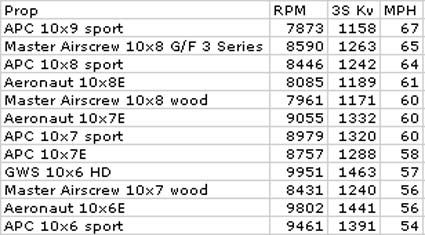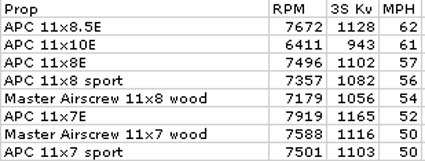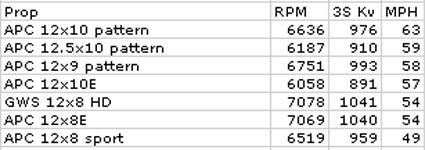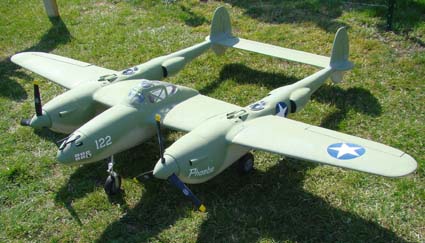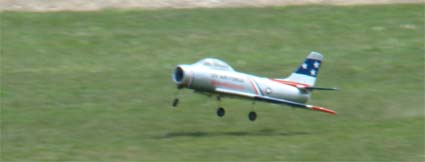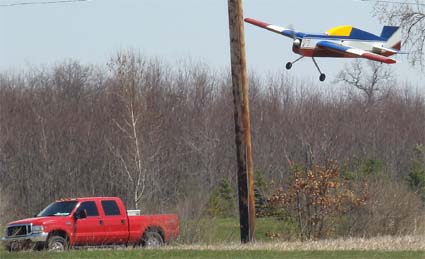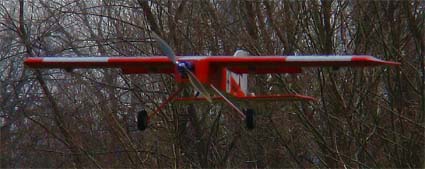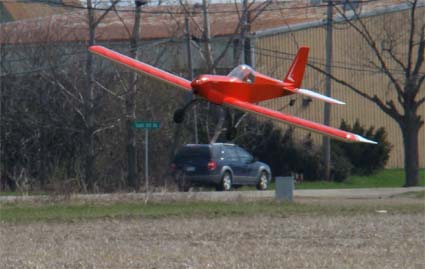 |
Flying High With Electric Power!
The Ampeer ON-LINE!
Fly the Future - Fly Electric! |
Site Table of Contents
| President: | Vice-President: | Secretary/Treasurer: |
| Ken Myers | Richard Utkan | Rick Sawicki |
| 1911 Bradshaw Ct. | 240 Cabinet | 5089 Ledgewood Ct. W. |
| Commerce Twp., MI 48390 | Milford, MI 48381 | Commerce Twp., MI 48382 |
| (248) 669-8124 | (248) 685-1705 | 248.685.7056 |
 | ||
| Board of Directors: | Board of Directors: | Ampeer Editor |
| David Stacer | Jack Lemon | Ken Myers |
| 16575 Brookland Blvd. | 8908 Sandy Ridge Dr. | 1911 Bradshaw Ct. |
| Northville, MI 48167 | White Lake, MI 48386 | Walled Lake, MI 48390 |
| 248.924.2324 | 248.698.4683 | 248.669.8124 |
| Mailed Ampeer subscriptions are $15 a year US & Canada and $20 a year world wide. FREE on-line! | ||
| The Next Flying Meeting:
Date: Saturday, May 9 Time: 10:00 a.m. Place: Midwest RC Society 7 Mile Rd. Flying Field, Salem Twp., MI | ||
|
When subscribing to or renewing the paper version of the Ampeer, please make the check payable to Ken Myers. We do not have a DBA for the Ampeer or EFO. Thanks, Ken By Ken Myers My flying buddy, Dave Stacer, and I have been talking about a new motor for his SR Batteries' AcroPro, so that the 3S "A123" 2300mAh pack he's made for it can get performance closer to, or better than, that of the original 3S Li-Po pack.
I've suggested that a good way to find the possible motor weight is to use 3 watts in per gram of motor weight for the lightest motor and 1.75 watts in per gram of motor weight for the heaviest.
I have found that most outrunner systems in this power/weight range, when loaded to 35 amps, have a system efficiency of about 75%. That means that for the 300 watts being put into the motor, the WHOLE system is "letting" the motor put out about 225 watts. The AcroPro, with the provided landing gear and suggested wheel diameter, can clear up to a 9.5" diameter prop with 1.5" of ground/grass clearance. I measured it. That means that the largest practical prop might be 10" with bigger wheels and/or extended landing gear. While the landing gear could be extended to accept an 11" or even 12" prop, the planes "stance" and "looks" would be compromised. The smallest practical prop for a 300 watts in plane would be 8 inches. Yes, I have a formula that I use for the smallest prop. 300 watts in divided by 100 watts in per pound equals 3 lb. or 48 oz. for the target flying weight. Smallest diameter prop to consider equals
The tables were created using 225 watts out. Some motor/ESC combinations will be somewhat less efficient and some will be slightly more efficient. The Kv provided in the tables provides a close estimate within about 2%. Looking at the tables for the 9", 9.5" and 10" props that should work on the AcroPro, there is a Kv range that allows a possibility of 5 different props; APC 9x8 sport/1402, Aeronaut 9.5x7E/1424, GWS 10x6 HD/1463, Aeronaut 10x6E/1441 and APC 10x6 sport/1391. Does that mean that ONLY those props may be used? NO! They are the props that are expected to draw about 35 amps with about a 1400 Kv motor and a 3S "A123" 2300mAh pack. Only trying them with a power meter will prove if they are the proper choice power-wise, and only flying them will prove if they are the correct choice for the airframe and desired flight performance. All of the pieces are now together for selecting a motor that might work. The motor must able to handle at least 35 amps, weigh between 100g and 171g and have a Kv of about 1400 to 1450. The candidates, from the list at Progressive RC, include the following, plus one, the AXI, that I've added. All of them have 4mm shafts. Suppo 2814-06
Model Motors AXI 2814/12 Gold*
b>PJS 3D 1700
Hurricane Flight Systems Storm HFSS 3542-1450
HexTronik HXT 35-42A
Weight? The weight question is not, which is the lightest, but which one has the weight needed to balance the plane. In some cases, the lightest may not be the "best" choice.
Outrunner Motors for a 3S "A123" 2300mAh pack being used at about 100 watts in per cell should - *Weigh between 100g (3.5 oz.) and 171g (6 oz.) *Have the Kv selected by the prop. Use the largest practical diameter prop and the Kv tables and select the Kv accordingly. *Take the "other considerations" into account and then buy it, and try it. *Let Ken Myers know your results so that he can share the information with others! :-) Using the tables, see if you can explain why I would consider using the following outrunner motors for a plane that has good ground clearance for a 10" to 10.5" prop and powered by a 3S "A123" 2300mAh pack.
Scorpion S-3014-16
Scorpion SII-3014-1220
Hacker A30-10L
Model Motors AXI 2820/10 Gold
Turnigy Aerodrive C3542-1250
KD 36-10L
Hurricane Flight Systems Storm HFSS 3542-1250
Great Planes Rimfire 35-36-1200
Put This One On Your Event Schedule!
The Balsa Butchers will once again be hosting the "Keith Shaw Birthday Party Electric Fly-In" at their field near Coldwater, MI. The event will take place on June 6 and 7, 2009.
|
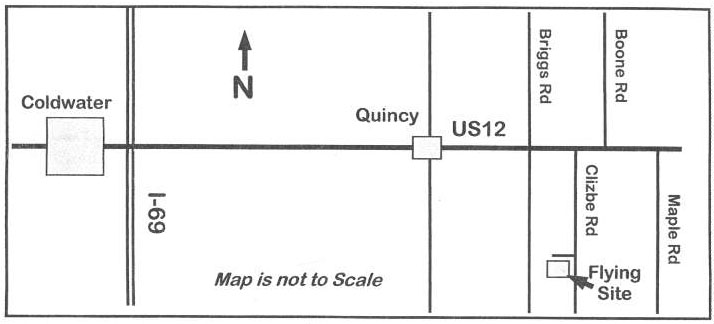
|
The Upcoming 2009 Mid-America Electric Flies In Search of a "Good" 4-channel Trainer
Last year I really returned to flight instruction once again. I volunteered to be the head flight instructor for the Midwest RC Society for both glow and electrically powered models. I've been contacted by a lot of folks about training them to fly RC planes. Unfortunately, most of these folks have contacted me after purchasing a plane. I've yet to find anyone who has purchased the best trainer plane, sometimes even with my recommendations! Darn!
Rugged: This is especially important for the landing gear. It also must have the landing gear placed correctly.
Great Planes ElectroStik EP ARF 50"
Multiplex Mentor Airplane Kit 64.2"
Sig Kadet EP-42B Blue ARF (Red available)
E-flite Mini Ultra Stick ARF
Apprentice 15e PNP by E-flite
Mini-Telemaster ARF
E-flite Ultra Stick 25e ARF
Model Tech Fledgling Gen-II R/C EP ARF w/BL Motor & ESC
While both planes should work, I would not consider the E-flite Ultra Stick 25e ARF at this time because it is a &quoe;stick" and can be quite maneuverable. The Model Tech Fledgling Gen-II is a high wing/cabin type, which should make it a bit more stable. The review on RC Groups for the Ultra Stick 25e also notes that it is not really for a beginner.
I found that this plane is available from several other suppliers, besides the one originally noted.
More info: This thread is mostly about the Gen-I plane, which goes back to Speed 600 brushed, and NiCad days, but the new Gen-II is mentioned.
The motor appears to be a TowerPro Brushless Outrunner 3015-7 1000kv / 470W:
The ESC might be a TowerPro L40-acro 40Amp Brushless Speed Controller
The only major problem that I anticipate, based on the photos, is the landing gear. My best guess is that it will be very soft "Chinese noodle" wire, and with its high "stance" it will probably bend easily. Radio: Spektrum DX5e 5Ch Full Range Transmitter/Receiver only MD2 (MD2 means mode 2, the most common set-up in the USA with the throttle and rudder on the left stick and ailerons and elevator on the right stick.)
Can an expenditure of about $500 be justified when a "beginner's&qot; plane like the HobbyZone Aerobird Swift RTF Electric can be had for $136.00?
After doing the research over a three day period, I ordered the Fledgling Gen-II from Hobby People on Sunday, April 19. You know what will be coming soon. ;-) 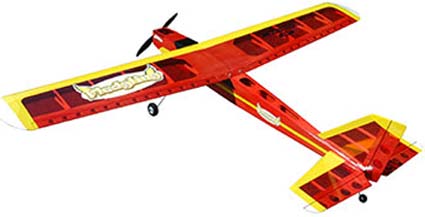
Fledgling Photo from Hobby People Web Site EFO's First Flying Meeting of the Year On Saturday, April 19, the EFO had their first flying meeting of the year. It was held at the Ribcrackers' flying field on Grand River Avenue in New Hudson, MI. A special thanks goes out to EFO member Roger Wilfong for allowing us to visit as guests!
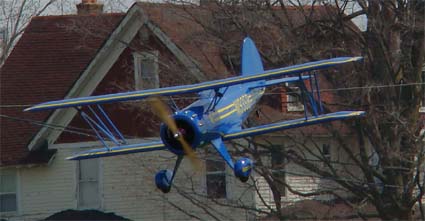
Leon Narozny's Bipe on final
The next EFO flying meeting is on Saturday, May 9 at 10:00 a.m. at the Midwest RC Society 7 Mile Rd. Flying field in Salem Township, MI. Everyone with an interest is welcome. AMA membership is required to fly. See you then! Upcoming Meet In Our Area On Sunday, May 3 the Radio Control Club of Detroit (RCCD) presents their 4th Annual Electric Fly-In at RCCD field. It is sponsored by Castle Creations. There is a Landing Fee of $5 for Pilots. The contest director is Mike Pavlock, phone 586-295-3053. More details and the field location can be found at www.rccd.org Special Thanks from Ken Myers I want to thank all of you who took the time to send a card or an email expressing your sympathy on the death of my mother on March 18.
|
To Reach Ken Myers, you can land mail to the address at the top of the page. My E-mail
address is:
KMyersEFO@theampeer.org
EFO WEBsite



